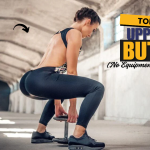Ever wondered why your glutes still look flat despite endless squats? The secret isn’t more reps—it’s targeting the right part of your glutes with the right equipment. If you’re chasing that lifted, rounded upper booty look, it’s time to level up with precision moves and smart gear.
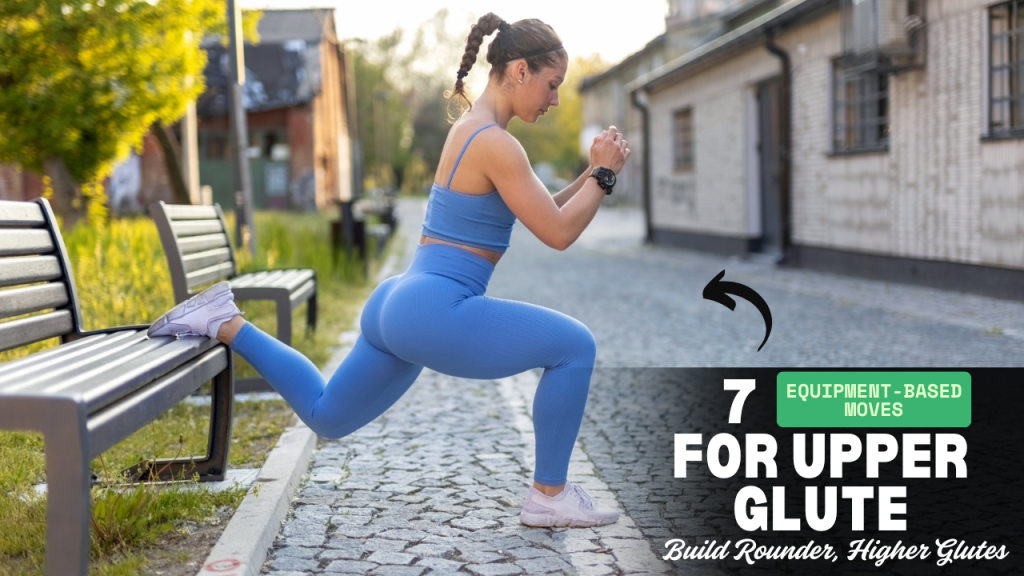
Why the Upper Glutes Matter
Most people think of the glutes as a single muscle, but in reality, the gluteal complex includes the gluteus maximus, medius, and minimus.
The upper glute region—primarily the upper gluteus maximus and gluteus medius—plays a crucial role in posture, hip stability, and that coveted sculpted look at the top of your glutes.
Myth Buster: “Squats are all you need for great glutes.”
While squats do work the glutes, they often emphasize the lower part. For that lifted, shelf-like upper glute, isolation and angle-specific equipment-based movements are key.
Top 7 Equipment-Based Moves for Upper Glute Gains
These exercises target the upper portion of your glutes more intensely than traditional bodyweight or general compound movements. Add them to your routine 2–3 times a week for noticeable results.
1. Cable Kickbacks (High Angle)
Why it works:
This movement isolates the upper glute through hip extension at a higher angle, maximizing tension.
Equipment: Cable machine with ankle strap

How to do it:
- Set the pulley to ankle height.
- Face the machine, attach the strap, and kick backward and slightly upward.
- Hold at the top, then return slowly.
- Perform 3 sets of 12–15 reps each leg.
Tip: Lean forward slightly for a better upper glute angle.
Did you know?
EMG studies show cable kickbacks activate more glute muscle fibers than standard bodyweight glute exercises.
2. Smith Machine Glute Bridges
Why it works:
Allows controlled hip thrusting while increasing load and minimizing back involvement.
Equipment: Smith machine, bench, pad
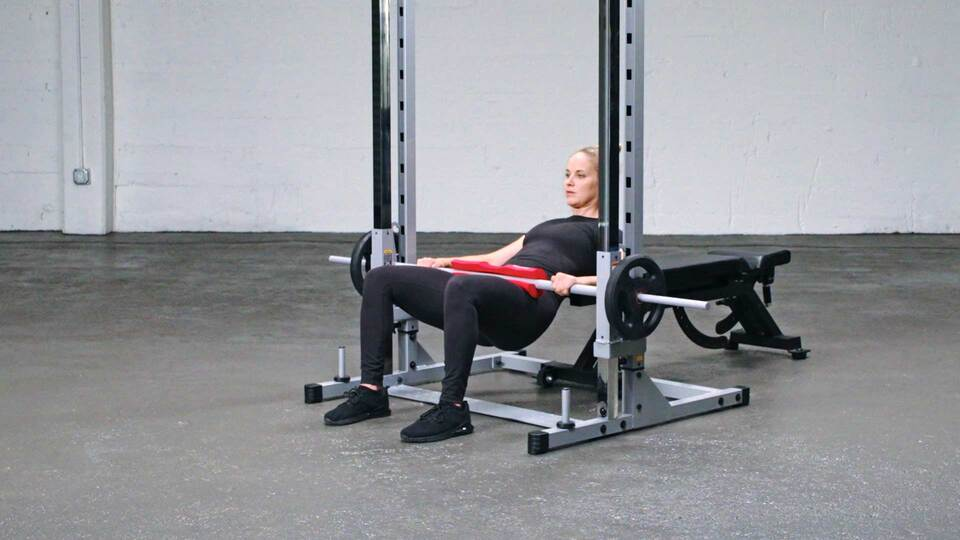
How to do it:
- Rest your upper back on a bench, barbell over your hips.
- Drive through heels, lift hips, and focus on squeezing at the top.
- 4 sets of 8–10 reps.
Bonus Burn: Add a resistance band above the knees.
3. Reverse Hack Squats (Feet High & Close)
Why it works:
Shifts emphasis to the upper glutes and hamstring tie-in.
Equipment: Hack squat machine

How to do it:
- Position feet high and close on the platform.
- Keep tension at the top range, and avoid locking out.
- 3 sets of 10–12 reps.
Interesting Fact:
Changing foot placement even slightly can drastically alter which glute region is targeted. Master the angles!
4. Dumbbell Curtsy Lunges (Elevated Back Foot)
Why it works:
Targets gluteus medius and upper glute through rotation and stretch.
Equipment: Dumbbells and step or platform
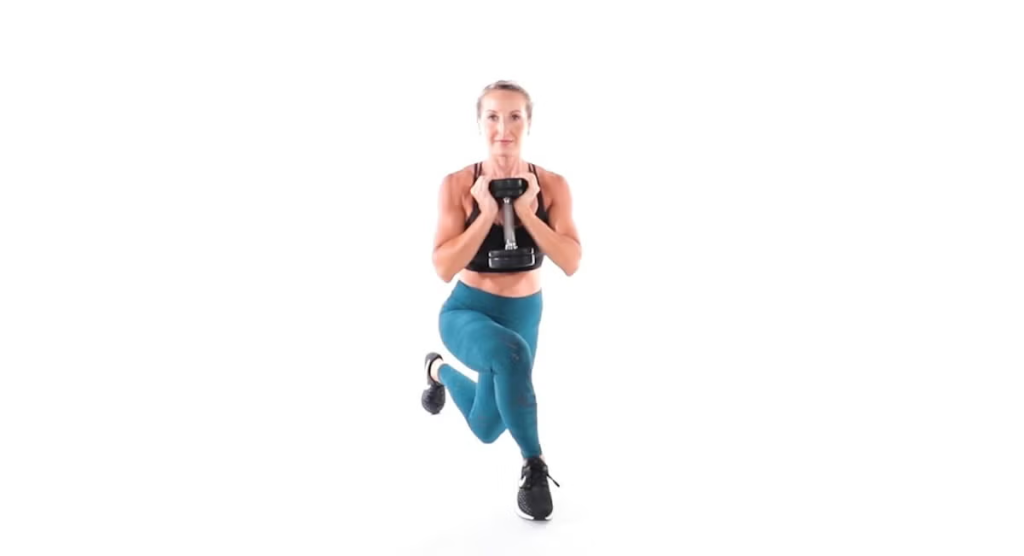
How to do it:
- Step one leg behind and across.
- Lower hips diagonally and push back up with glute drive.
- 3 sets of 10 reps on each side.
Add Up: Elevating the back foot enhances the range of motion.
5. Glute-Focused Back Extensions
Why it works:
Targets the upper glutes and erector spinae, helping lift and define the upper glute shelf.
Equipment: Roman chair or 45-degree back extension bench
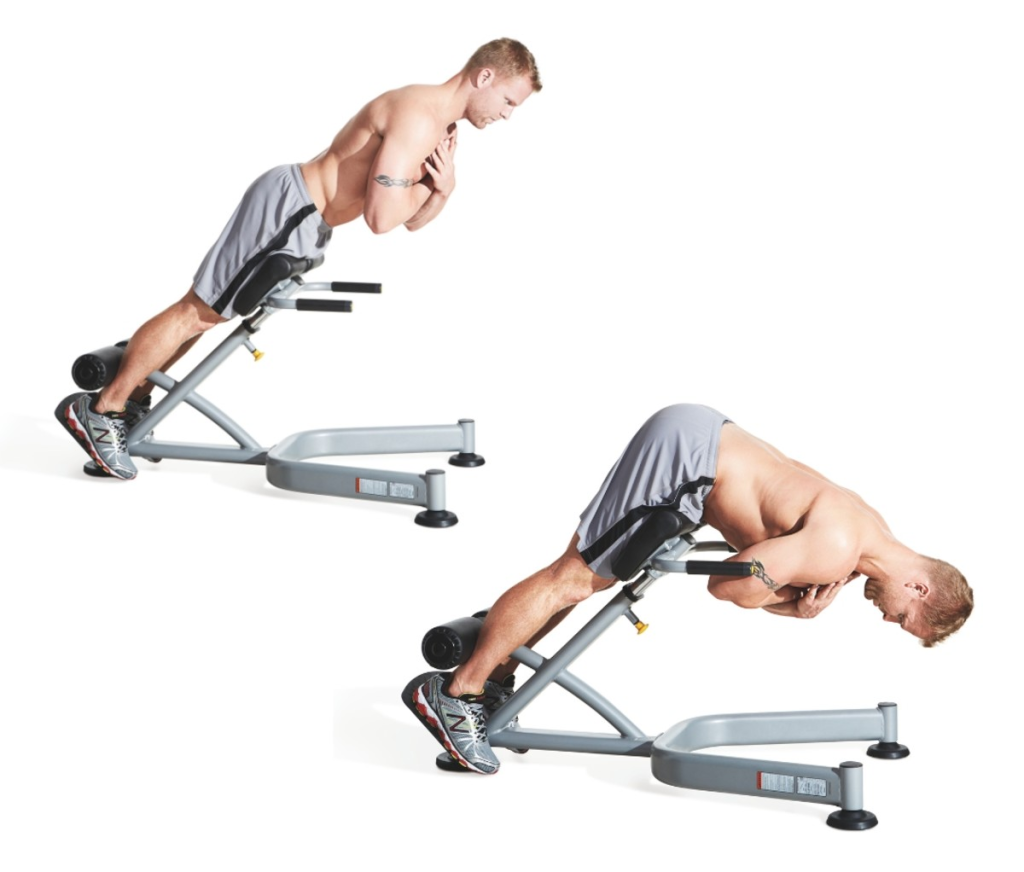
How to do it:
- Position hips slightly above the pad.
- Cross your arms or hold a plate to your chest.
- Squeeze glutes at the top; avoid hyperextending.
- 3 sets of 15 reps.
Variation: Point toes outward slightly to increase glute involvement.
6. Hip Abduction Machine (Leaning Forward)
Why it works:
Engages gluteus medius and minimus, crucial for outer upper glute development.
Equipment: Hip abduction machine
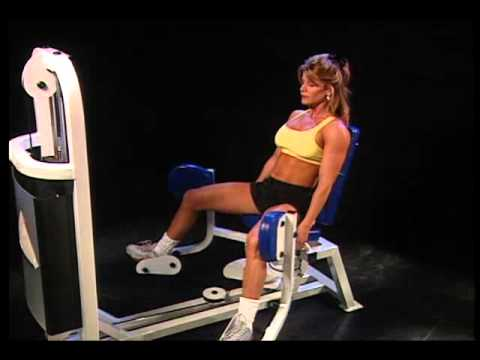
How to do it:
- Sit forward, and lean your torso slightly ahead.
- Open legs slowly, squeeze at peak.
- 4 sets of 15–20 reps.
Pro Insight:
Leaning forward increases the range and glute activation compared to sitting upright.
7. Standing Cable Diagonal Pull-Throughs
Why it works:
Combines hip hinge with a diagonal pull, hitting the upper glutes from an angle most glute workouts miss.
Equipment: Cable machine, rope attachment
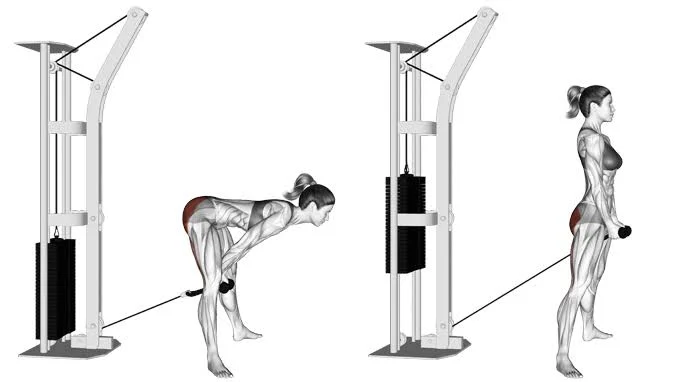
How to do it:
- Stand facing away, rope between legs.
- Hinge at hips and pull through diagonally upward.
- Control the return to stretch glutes.
- 3 sets of 12–15 reps.
Creative Tip: Think of it as a “cross-angle thrust.”
How to Maximize Your Upper Glute Workout
- Progressive Overload: Gradually increase resistance, reps, or time under tension.
- Mind-Muscle Connection: Focus on engaging glutes, not quads or lower back.
- Rest and Recovery: Glutes grow with proper sleep and protein intake.
- Mix It Up: Rotate movements every few weeks to avoid plateaus.
Conclusion: Build the Upper Glutes They’ll Notice from Behind
Upper glute growth isn’t about luck—it’s science, technique, and the right equipment. By incorporating these 7 focused, equipment-based exercises, you’ll not only round out your shape but build the power and lift that commands attention in and out of the gym.
Remember: A stronger, higher glute doesn’t just look great—it also improves performance, balance, and injury resistance. That’s real power.
Frequently Asked Questions (FAQs)
What are the upper glutes, and why should I train them specifically?
The upper glutes primarily involve the upper portion of the gluteus maximus and the gluteus medius. Training them helps lift and round out the buttocks, enhances hip stability, improves posture, and contributes to a more defined and sculpted lower body.
Can I target just the upper glutes without growing the lower part too much?
While you can’t completely isolate one area, certain movements emphasize the upper glutes more effectively—especially those involving hip abduction, high-angle extensions, and specific machine work. Consistency and proper form help shift focus away from the lower glutes.
How often should I train upper glutes for the best results?
Aim to train your glutes 2–3 times per week, allowing at least 48 hours of recovery between sessions. Integrate upper glute-focused exercises into your lower body days for optimal frequency without overtraining.
Do I need gym equipment, or can I achieve similar results at home?
While bodyweight and banded exercises can help beginners, equipment-based movements (like those using cables, Smith machines, and abduction machines) allow for better muscle isolation and progressive overload, leading to faster, more defined results.
How long will it take to see noticeable changes in my upper glutes?
With proper form, consistency, and a protein-rich diet, visible improvements may appear within 4–8 weeks. However, genetics, training intensity, and recovery all impact the speed of results.
Will training upper glutes make my hips look wider?
Yes, but in a sculpted and aesthetic way. Building the gluteus medius and upper gluteus maximus can enhance the upper hip area, contributing to a more hourglass or athletic silhouette.
I feel my quads working more than my glutes—what am I doing wrong?
If your quads dominate, you may be using incorrect form or poor alignment. Focus on driving through your heels, leaning slightly forward when needed, and actively squeezing your glutes during each rep.
Are these exercises suitable for beginners?
Yes, but beginners should start with lighter weights, focus on form, and seek guidance on equipment use. Gradually increase intensity as strength and technique improve.
Can I do all 7 exercises in one workout?
It’s possible, but for most people, it’s better to choose 4–5 per session, mixing intensity, range, and movement angles. Rotate exercises weekly for balanced upper glute development and to prevent overtraining.
What should I eat to support upper glute growth?
Focus on lean proteins (chicken, fish, tofu), complex carbs (quinoa, oats), and healthy fats (avocados, nuts). Pair this with hydration and sleep to support muscle recovery and growth.





